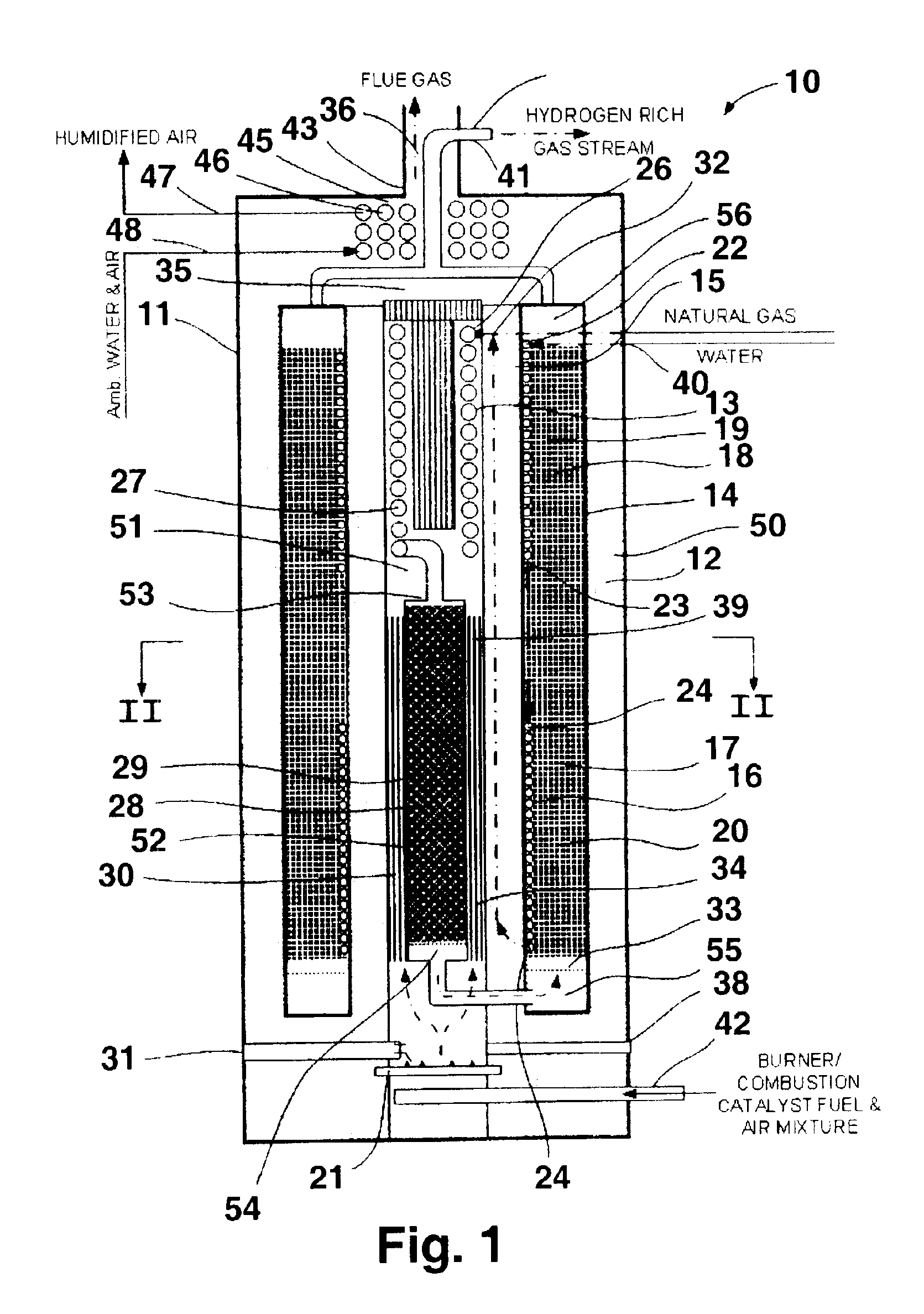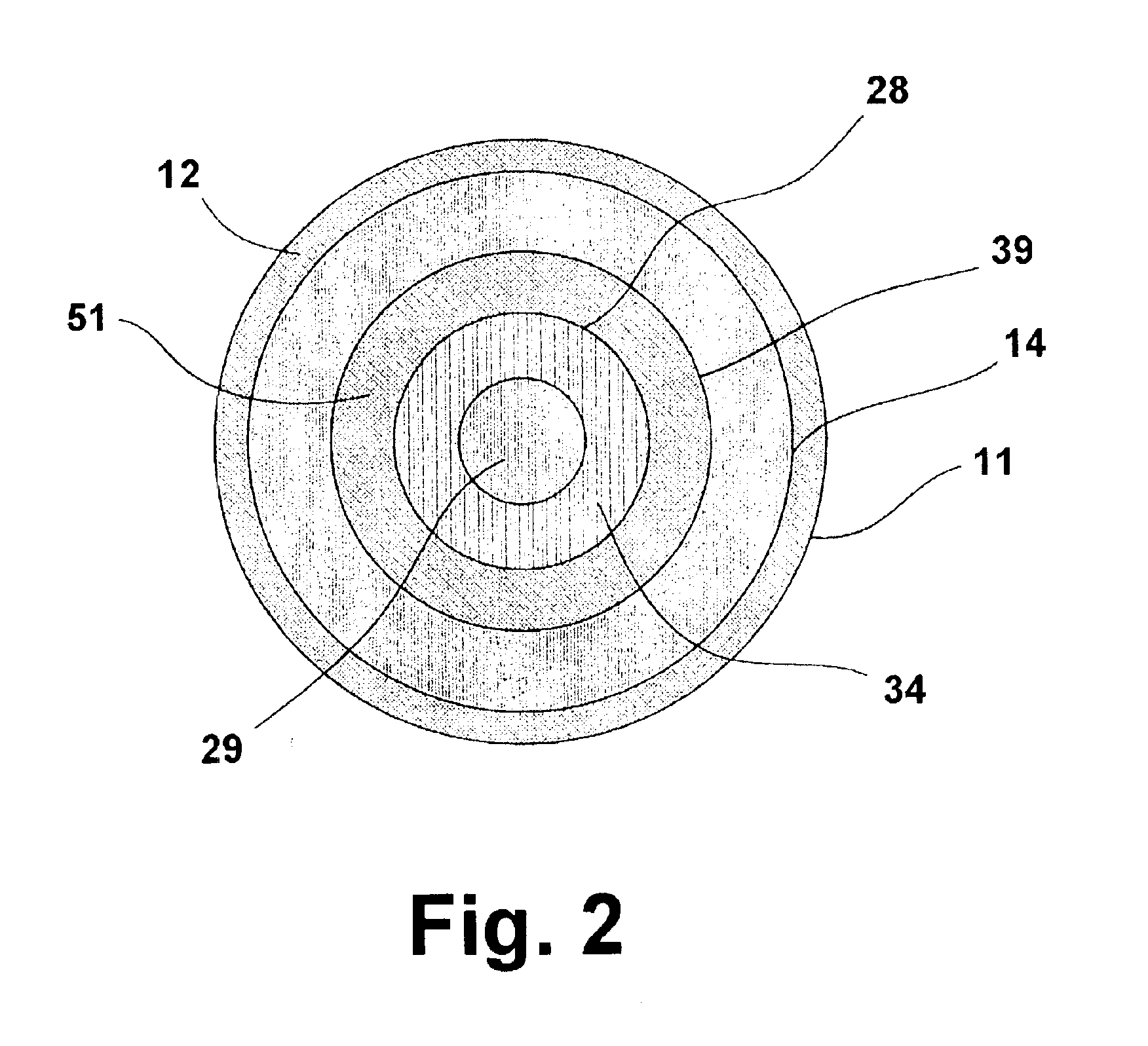Simplified three-stage fuel processor
- Summary
- Abstract
- Description
- Claims
- Application Information
AI Technical Summary
Benefits of technology
Problems solved by technology
Method used
Image
Examples
Embodiment Construction
[0015]The fuel processor of this invention is suitable for converting hydrocarbon-containing gaseous and liquid fuels, such as natural gas, naphtha and alcohols, to a hydrogen-rich synthesis gas. Such hydrogen-rich synthesis gas is suitable for use in fuel cells, such as PEM fuel cells, without additional processing for removal of carbon monoxide as is frequently required of synthesis gases produced in a conventional manner. The fuel processor can also be used, as previously indicated, to supply hydrogen for a hydrogen refueling station.
[0016]The fuel processor of this invention is comprised generally of a housing, partially filled with an insulating material which is used to contain and insulate the various components of the processor as discussed in more detail herein below. The fuel processor of this invention comprises four basic sections, a heat exchange section comprising a methanator cooling coil, a steam coil and a shift cooling coil, a hydrocarbon reformer section comprisin...
PUM
| Property | Measurement | Unit |
|---|---|---|
| Temperature | aaaaa | aaaaa |
| Temperature | aaaaa | aaaaa |
| Temperature | aaaaa | aaaaa |
Abstract
Description
Claims
Application Information
 Login to View More
Login to View More - R&D
- Intellectual Property
- Life Sciences
- Materials
- Tech Scout
- Unparalleled Data Quality
- Higher Quality Content
- 60% Fewer Hallucinations
Browse by: Latest US Patents, China's latest patents, Technical Efficacy Thesaurus, Application Domain, Technology Topic, Popular Technical Reports.
© 2025 PatSnap. All rights reserved.Legal|Privacy policy|Modern Slavery Act Transparency Statement|Sitemap|About US| Contact US: help@patsnap.com



